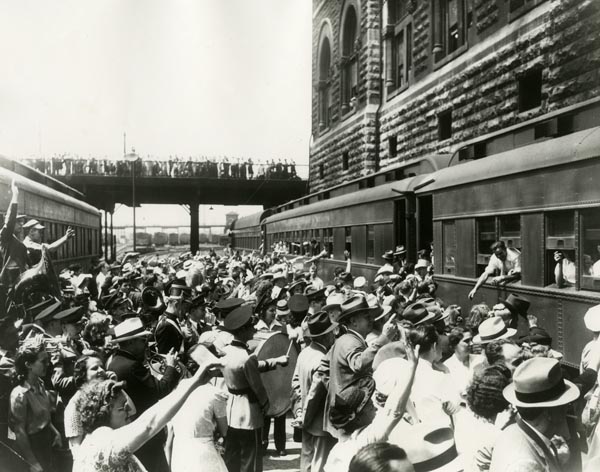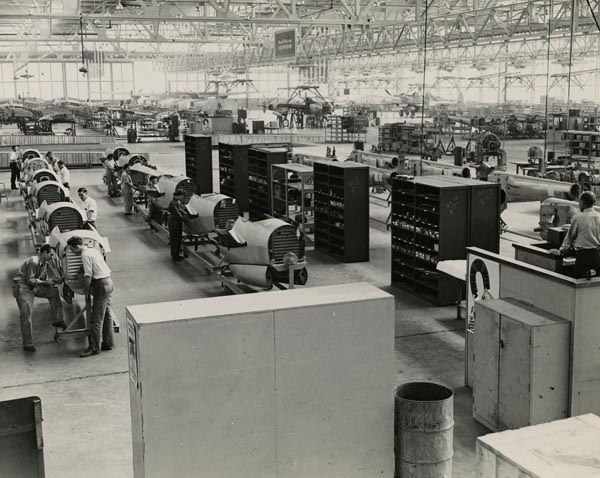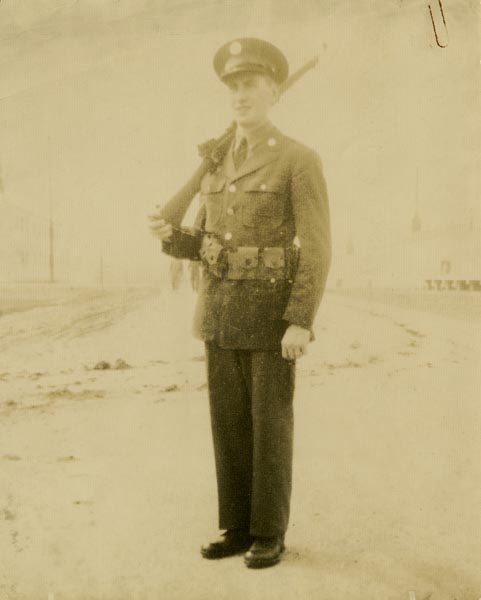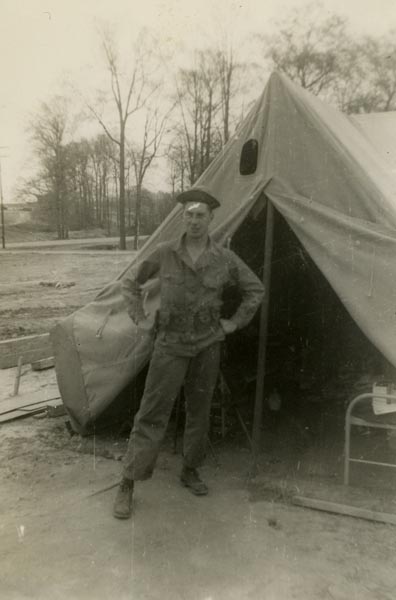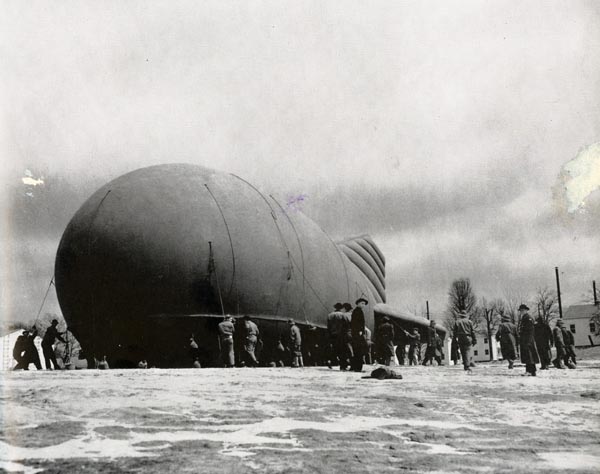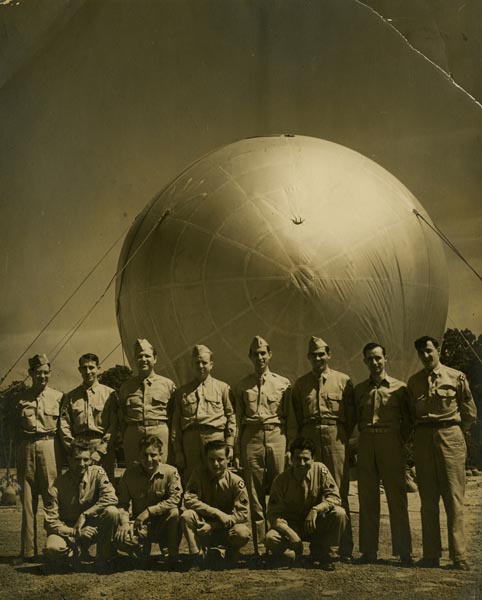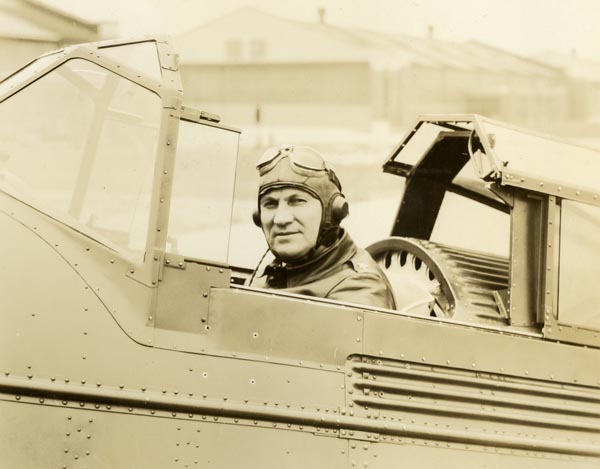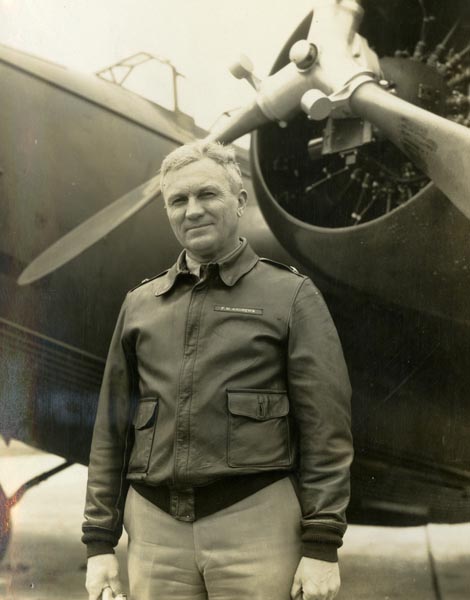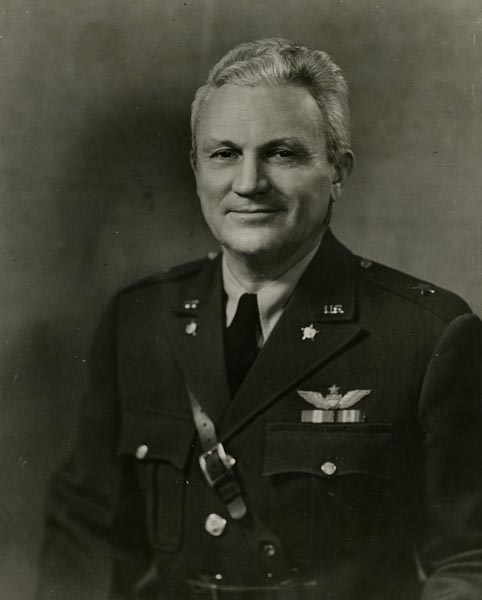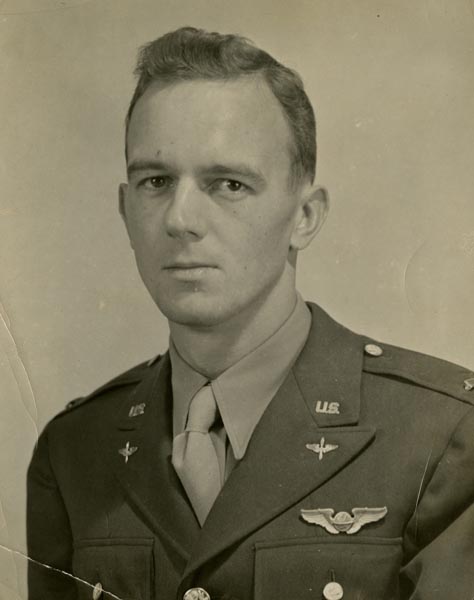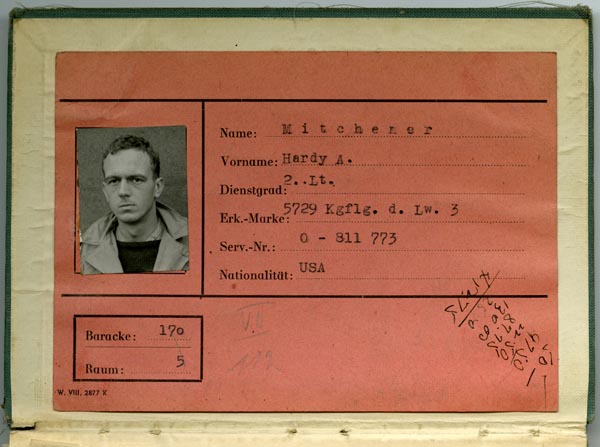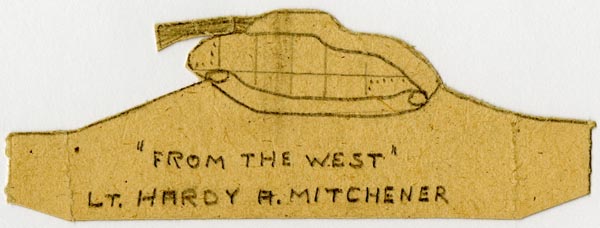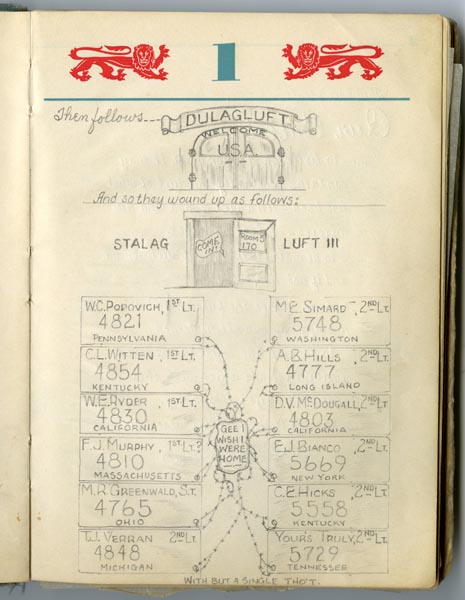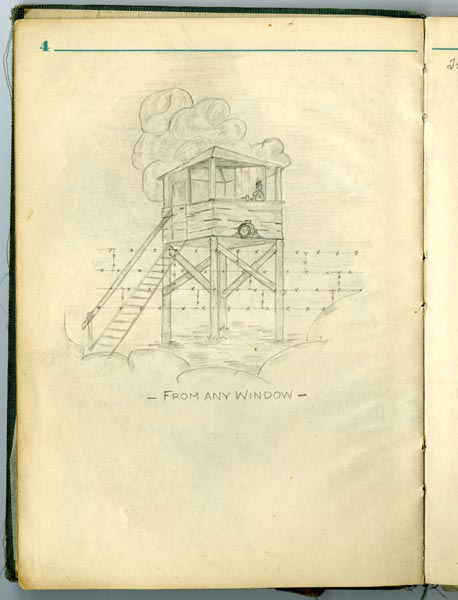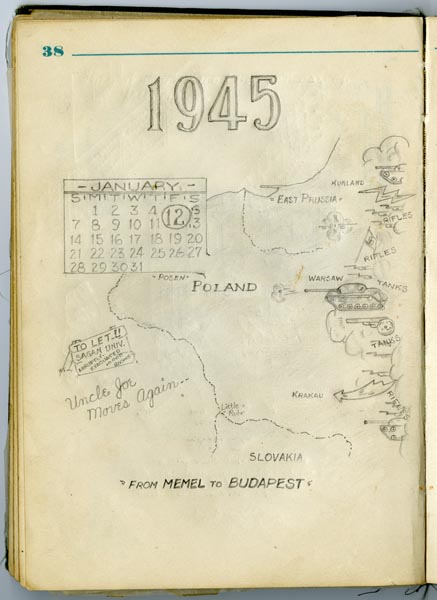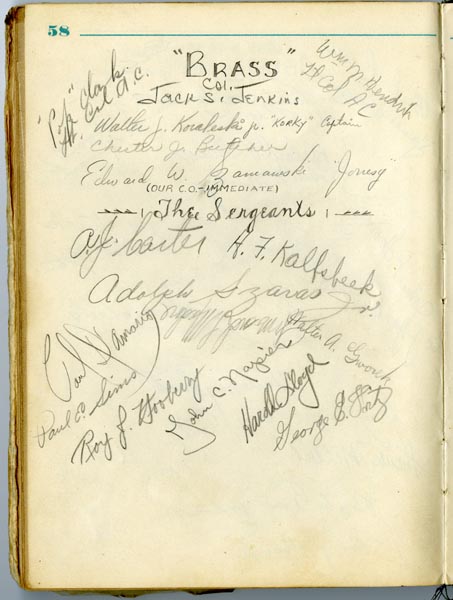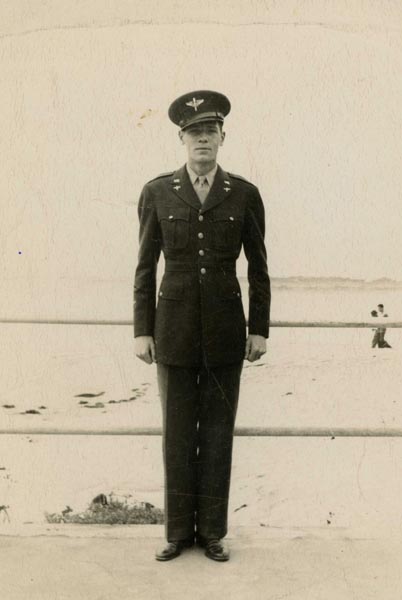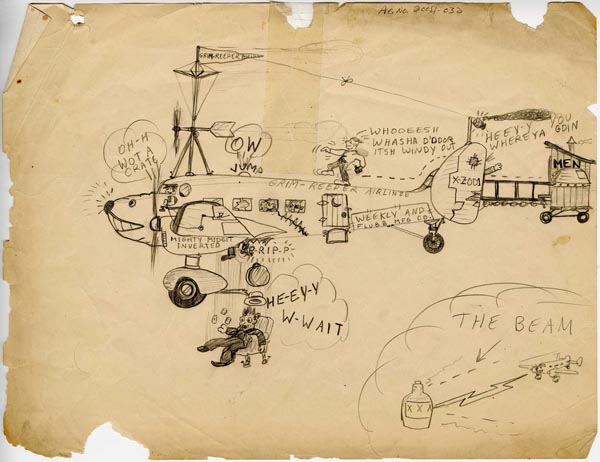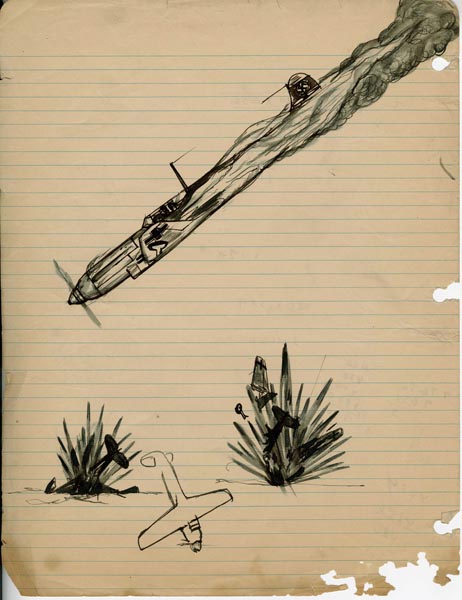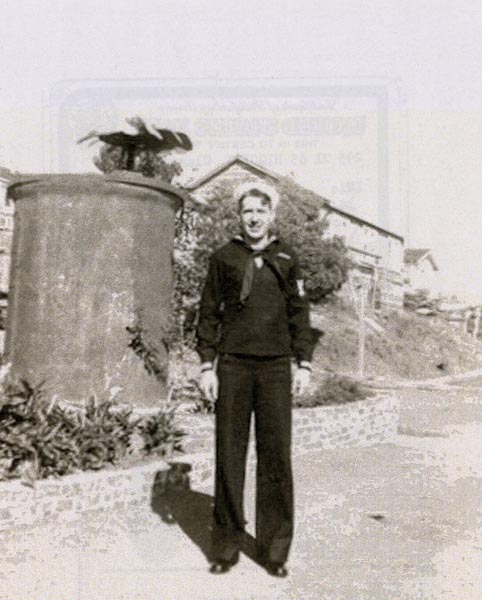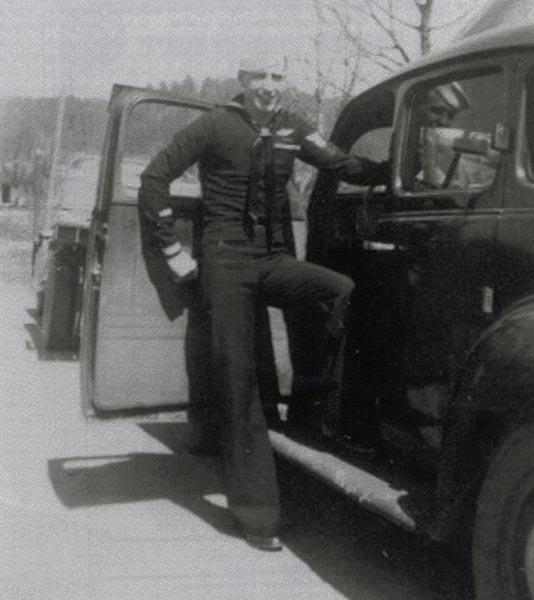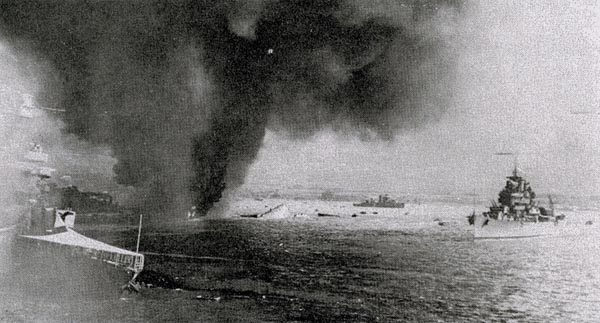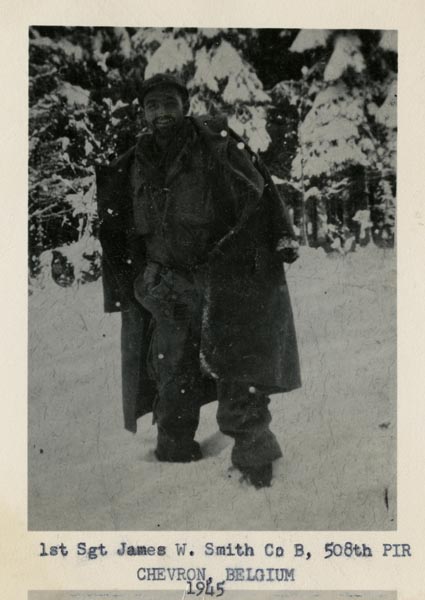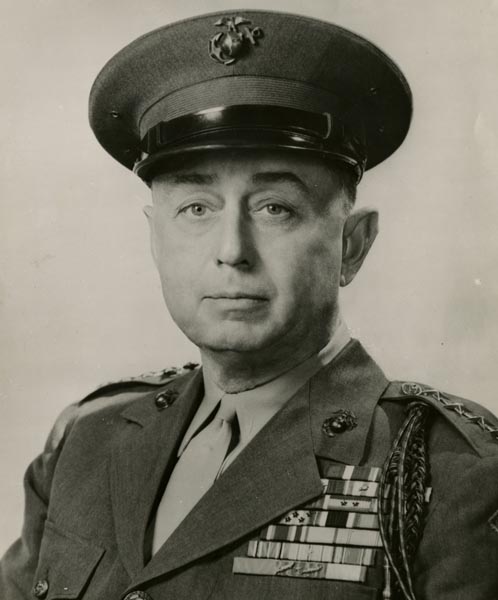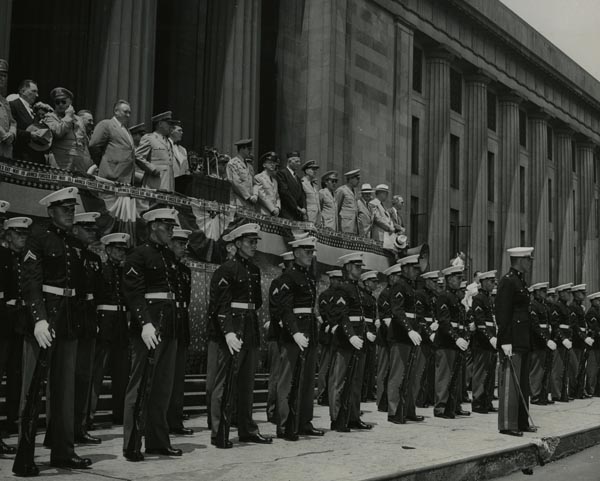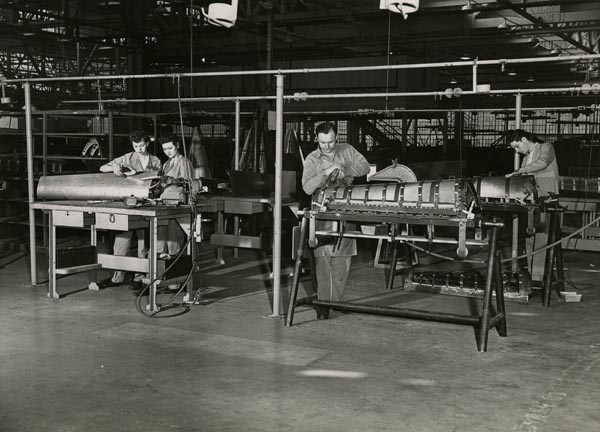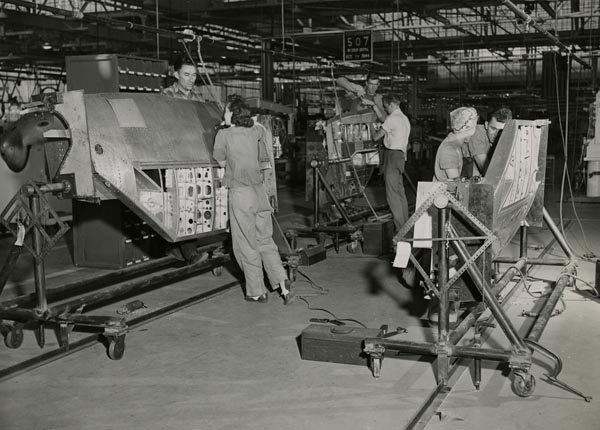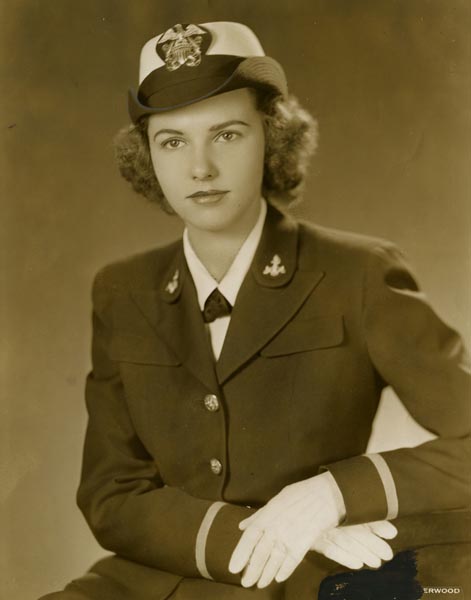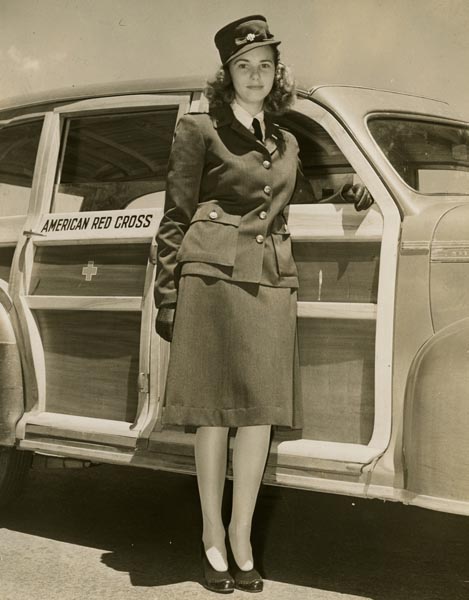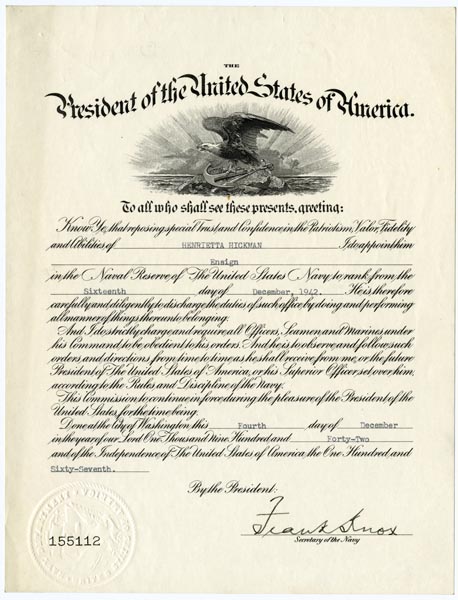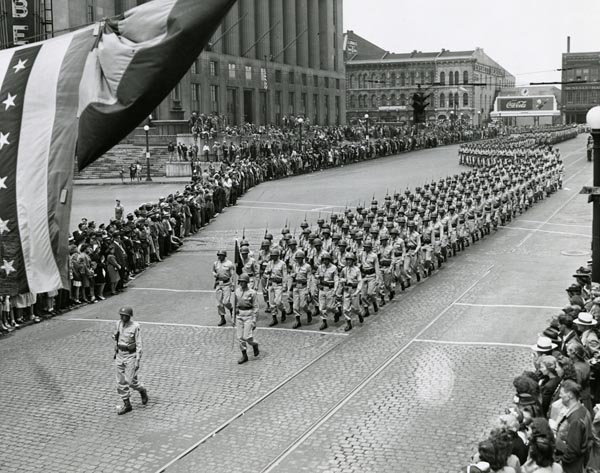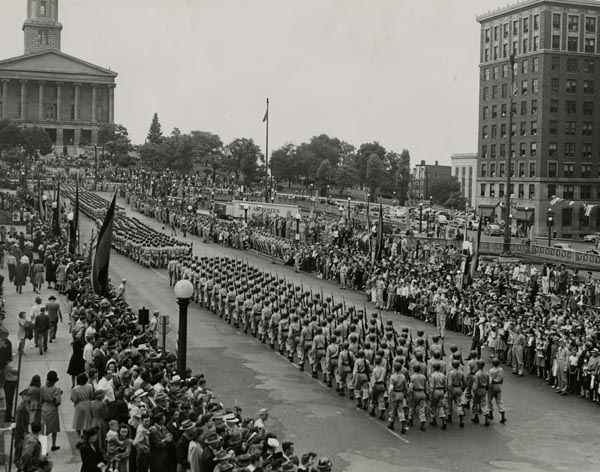World War II
|
Robert C. Coy Robert C. Coy was a private in the Battery B, 306th Coast Artillery Barrage Balloon Battalion. He was originally stationed at Camp Tyson, located nine miles south of Paris, Tennessee and named after World War I hero Brigadier General David Lawrence Tyson, another Tennessean. The camp, which covered 1,900 acres, consisted of nine battalion areas. Barrage balloons are large balloons tethered to the ground by metal cables. First used in Britain in 1938, they were used to defend cities and other key targets against enemy dive bombers or low-level-attack aircraft, which were disabled if they collided with the cables. By the middle of 1940, there were 1,400 balloons, a third of them over the London area. By 1944 the number had risen to nearly 3,000. Great Britain was not the only country interested in aerial barriers. Many Americans would be surprised to know that the United States had its own extensive barrage balloon defense during the early part of World War II. In fact, many areas of the West Coast had balloon curtains protecting cities, factories, and harbors. By August 1942 approximately 430 balloons were defending important areas in California, Oregon, and Washington against low-level attack. Several balloon units were also sent overseas into combat. |
|
General Frank Maxwell Andrews General Frank Maxwell Andrews was born in Nashville, Tennessee, on February 3, 1884. After his graduation from Montgomery Bell Academy, he attended the U. S. Military Academy at West Point. In 1911 he received his commission as a 2nd Lieutenant and served as a cavalry officer in the Philippines and Hawaii. Shortly after the start of World War I, Andrews was transferred to the Aviation Section, U. S. Signal Corps, where he earned his aviator wings. During World War I he commanded various airfields around the country and served in the War Plans Division of the Army General Staff in Washington, D. C. In 1940 Andrews assumed control of the Air Corps Panama Canal Air Force, and in 1941 he became commander of the Caribbean Defense Command. At the Casablanca Conference in January 1943, he was appointed commander of the United States European Theater of Operations, replacing Dwight D. Eisenhower. During an inspection tour on May 3, 1943, General Andrews and thirteen others died in a plane crash on the Reykjanes Peninsula in Iceland. At the time of his death he was ranked Commanding General, United States Forces, European Theatre of Operations, and was the highest-ranking Allied officer to die in the line of duty by that point in the war. General Andrews was buried with full military honors at Arlington National Cemetery. On February 7, 1945, Maryland’s Camp Springs Army Air Field was renamed Andrews Field (later Andrews Air Force Base). |
|
Ben Clay Espey Ben Clay Espey was born in Nashville, Tennessee, on January 28, 1924, and was the son of Ben King Espey and Nannie Mae Windrow Espey. At the age of 16, he received his private pilot’s license. He was a member of McKendree Methodist Church and attended Duncan Preparatory School. After his graduation in 1940, he attended the University of the South at Sewanee, Tennessee, where he received the Algernon Sydney Sullivan scholarship and was a member of the Beta Theta chapter of the Delta Tau Delta fraternity, the German club and the golf club. During his junior year at the University of the South, he volunteered as an aviation cadet, and in December of 1942, he was called into active duty. He was stationed in North Africa and Southern Italy. While stationed in Italy, he was the cartoonist for the 15th Air Force’s paper and fashioned the character “Sir Donald McAce.” He served in combat with the 15th Air Force and participated in air offensives over the Balkans, Austria, Germany, Romania and Italy. He was killed on April 15, 1944 while returning from a bombing mission over the Ploesti oil fields in Romania. At the time of his death, he was working as a tail gunner on a B-17 Flying Fortress that was attacked by German fighter planes. Sgt. Espey’s parachute was seen falling toward the front of his plane by the crew members of other aircraft participating in the mission. It was thought for a time that he might have survived the attack and was listed as missing in action. On May 20, 1944, however, the War Department notified his parents that he had actually been killed during the confrontation with the German fighter planes. His remains were found and returned to Tennessee in 1950. His funeral and burial took place on March 23, 1950. He is buried in Woodlawn Memorial Park in Nashville, Tennessee. He received several medals and honors including the Air Corps Citation, the Purple Heart, a Presidential Citation, and the Air Medal. |
|
Clarence Higgins Clarence Higgins was born June 17, 1922 in Erwin, Tennessee. He joined the U. S. Navy on July 31, 1940, and attended training camp at Naval Training Station at Norfolk, Virginia. Afterwards he was assigned to the light cruiser USS St. Louis as an electrician's mate. He was aboard the St. Louis in Hawaii during the attack on Pearl Harbor on the morning of December 7, 1941. He had just finished eating his breakfast and was up on the ship’s deck when he noticed several aircraft approaching at an exceptionally low altitude. The aircraft were headed in the direction of “battleship row” when they began dropping torpedoes in the harbor. He immediately ran to the bridge of the ship to inform the officer on duty that they were under attack. Higgins was ordered to go wake up Commanding Officer, Captain G. A. Rood, who opted to forgo changing into uniform and appeared on deck in his pajamas and hat. As Higgins returned to the deck he noticed large red balls on the wings of the enemy aircraft and realized they were the Japanese. It took the St. Louis about an hour and half to get underway. As they were leaving, Higgins saw a man in the water surrounded by burning oil. As the man was pulled to safety his uniform caught on fire and he was engulfed in flames. Higgins tore off the man’s burning uniform but he still received severe burns. Higgins also witnessed the bombing of the USS Arizona. In his veteran's survey, he said it was the largest explosion he had ever seen: it looked as if the battleship was lifted out of the water and he could see daylight underneath the hull for a second. Higgins went on to serve in the Asiatic-Pacific Theatre, serving as an electrician's mate aboard the submarines USS Sunfish, USS Loggerhead, and USS Skate. He was awarded the WWII Victory Medal, American Area Campaign medal, the Asiatic-Pacific Campaign medal, and the Combat Insignia Award. He was aboard the USS Loggerhead on patrol in the Pacific when the war ended. |
|
James W. Smith James W. Smith was born on June 29, 1920 in Elizabethton, Tennessee. In July of 1936, Smith quit high school and joined the U. S. Army. He was shipped to Honolulu for basic training at Schofield Barracks. After three years he returned to Tennessee, just barely missing the attack on Pearl Harbor. After the attack, Smith decided to join the army again. He was assigned to a paratrooper unit in the 508th Parachute Infantry Regiment, known as the "Red Devils," and trained at Fort Benning, Georgia. In December 1943, he was shipped to Nottingham, England, to prepare for the invasion. On June 6, 1944, his regiment, along with the 82nd Airborne Division, parachuted into France near Sainte-Mère-Église at the beginning of what is known as Operation Overlord. They fought for 33 days without relief or rations. They obtained food from a captured cheese factory and killed cows. Once relieved from combat, the regiment returned to England with only 33 of the 160 men that parachuted in. In December 1944 his regiment received orders to depart for Belgium, despite not having been issued new clothing or weapons, because the German Army had crossed US lines. This was the beginning of the Battle of the Bulge. Smith was in the same foxhole for Christmas of 1944 and New Year of 1945. The regiment jumped off January 2, 1945, fighting the German Army back through central Europe. Smith was in Paris when the war ended in May of 1945. Smith spent the next 23 years serving in the Army with the 82nd Airborne Division. He fought in both the Korean and Vietnam Wars. |
|
Henrietta Hickman Morgan Henrietta Hickman Morgan was born in 1917 in Gallatin, Tennessee. The daughter of Davidson County Judge Litton Hickman, she attended Ward-Belmont Preparatory School and Vanderbilt University. At Vanderbilt she was a member of Kappa Alpha Theta sorority and Phi Beta Kappa honorary scholastic fraternity, and she was one of the first women to be editor of The Masquerader, the university’s humor magazine. Morgan was also a member of the Junior League, the Girls Cotillion Club, the Nashville Query Club, and the Nashville Red Cross Moto Corps, of which she was captain. She graduated from Vanderbilt in 1938. In September 1942 Morgan volunteered for service with the WAVES and received her naval training at Smith College in Northampton, Massachusetts. Appointed a midshipman in November 1942, she was commissioned an ensign the following month. She was among 50 students selected from a class of 900 for early graduation. Upon reporting for duty in Washington the day after receiving her commission, she became an aide to the director of convoy and routing. She was promoted to lieutenant, junior grade, in February 1944. Lieutenant Morgan was hospitalized at Bethesda Naval Hospital on July 20, 1944, with an undisclosed illness. She died April 27, 1945, shortly before the end of the war. |
Section researched and written by Kim Mills, Archival Assistant.
